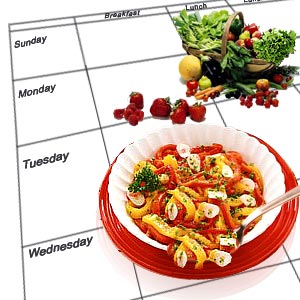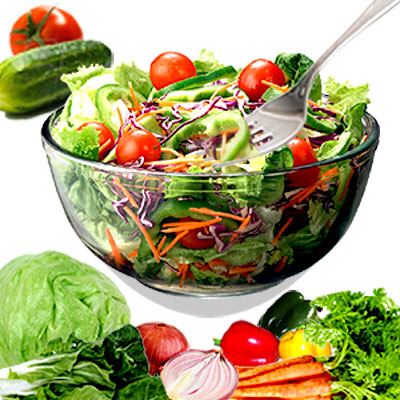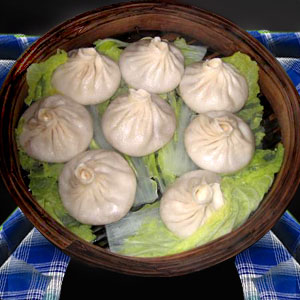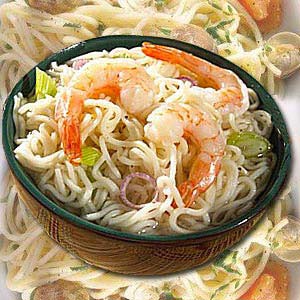Healthy Meal Planning


'What's for meal time today' is a million dollar question that many homemakers search for answers. Three meals a day and seven dinners a week seem to be a preposterous proposition for most home managers. Meal planning need not be so stressful any more. There are certain simple tricks, refreshing ideas, no-fuss recipes that come in handy to make mealtime a great interaction session with the family.
Planning a Meal
A well balanced diet is a basic requirement for a healthy family. A homemaker ponders over what to serve, how much to serve, how much to spend, where to shop, how much to buy, what dishes to make and how to serve meals. It is essential that she equips herself with sufficient information on nutrient requirements and individual preferences before working on a delicious meal.
More importantly, meals have to be planned within the family income. Time, labor and fuel need be economized. Varying dishes can be prepared with a proper selection of foods and preparing an appealing meal selecting food in terms of color, texture and flavor. Meal planning is a skill no doubt and it improves with practice.
Why plan a Meal?
Planning a meal in advance saves money. Impulse spending can be cut and leftovers can be used efficiently. Buying in bulk also makes it easier to stockpile freezer meals at reduced prices. Meal planning also saves time. With sufficient time to prepare side dishes and salads to complement the main menu, family's consumption of fruits and vegetables is likely to be on the increase.
Weekly Meal Plan
Weekly Meal Plan eases the daily chore of meal planning and cooking. Statistics prove that planning a meal ahead of time eliminates much of the random buying at grocery stores. To make weekly meal plan successful, it would be wise to make a list of the family members' likes and dislikes. Prepare the grocery list and shop for the entire week.
It should be simpler to use a calendar to list the meals of the day. Seek suggestions from other family members. Freezer is of great help and plays a vital role in weekly meal planning. Freezer bags are an asset and should be stored flat to save space. Even if a five course meal has to be prepared on a Sunday morning, one item can be cooked and the other four could come from the refrigerator.
Weekly meal plan brings a variety to the diet and interest in the menu. For example, a salad could be prepared with myriad colors to make the meal look more appetizing. Big dinner on Sundays, leftovers for Tuesdays and burgers on Mondays, spaghetti for Wednesdays, casserole for Thursday and grills on Fridays and Saturday nights for pizzas. If such a routine is created around menu planning, there would be enough time and space to try new recipes as well. Do not forget to keep these old plans safe in a folder as they can be reused when you are hard pressed for time!
Planning a healthy meal
Healthy eating starts by making nutrient rich food choices, food that are packed with protein, vitamins and minerals. Only this can help one live a longer and healthier life. There are certain functional foods which when consumed in appropriate amounts provide health benefits beyond basic nutrition. Recent researches have shown that eating such functional foods that are rich in health promoting ingredients or natural components can enhance health and reduce the risk of acute and chronic diseases.
Since the habit of eating healthy food should be imbibed as a lifelong habit, it has to be formed early in life. Even children can be taught to eat a balanced diet with a variety of healthy foods. Such functional foods can be found in a grocery store and can be refrigerated. Some of the functional foods include cheese, almonds, broccoli, blueberries, milk, salmon, garlic, citrus fruits, yogurt, soy, spinach, cranberries, walnuts, tomatoes, and flaxseed, avocado and hot cocoa.
Meal planning tips
Making a draft plan, shopping smartly, retaining flexibility at the marketplace and firming up the menu plan are some of the basics of menu planning.
- It would be helpful to scan advertisements on food specials and sales. In fact seven dinner entrees can be made from weekly specials with side dishes, salads et al.
- Leftovers could be converted to something appealing and wastage can be reduced. For instance, pizza bases can be used to make instant pizzas. Just the topping could be changed every time to make it more nutritious.
- Leftover pastas can form salad with other vegetables the next day.
- Always shop with an open mind. One should also be ready to find a substitute in case of a great deal.
- After your shopping, it is best match it up with the calendar according to priorities and engagements. While the oven roast can suit a Sunday afternoon, a quick pizza is ideal for soccer night.
Top of the Page: Healthy Meal Planning
Tags:#meal planning #meal plans #diet meal plan #healthy meal planning #weekly meal planning #nutritional meal planning
 Food and Nutrition Facts
Food and Nutrition Facts Chamomile
Parsnip Soup
Dim Sum
Gazpacho Soup
Whole Grain Cereal
Jicama Nutrition
Bok Choy Stir Fry
Chia Seeds Benefits
Teff Nutrition
Kaniwa
Flax Seed
Wheatgrass Benefits
Kelp Benefits
Types of Chili Peppers
Medicinal Benefits of Pomegranate
Arugula Leaves
Maca Root
Pitaya Fruit
Benefits of Celery
Leek
Asparagus Benefits
Oyster Stew
Oyster Mushroom
Lupin Beans
Quinoa
Freekeh
Extra Virgin Olive Oil
Dill Pickle
Sauerkraut
Fat Burning Foods
Nutrition Chart
Food Combining
Calorie Counter
calories ...
Non Alcoholic Beverage
Punch Recipes
Food Label Nutrition
Homemade Sausages
Cooking Steak
Eating on a Budget
Budget Friendly Recipes
Quick Recipes
 Healthy Packed Lunch
Healthy Packed Lunch Overnight Oats Recipes
Eggplant Casserole
Brunch Recipes
Burrito Recipes
Muffin Recipes
Cupcake Frosting
Apple Crisp
Stir Fry Cooking
Seafood Salad Recipe
Cooking Corn on the Cob
Finger Food Recipe
Sandwich Recipe
Bread Stuffing Recipes
Easy Chili Recipes
Picnic Recipes
Edible Mushroom Recipes
Mushroom Soup Recipes
Dip Recipe
Tapas Recipe
Corned Beef Recipe
Canned Salmon Recipe
Tilapia Recipes
Crumb Cake
Flourless Chocolate Cake
Regional Food
 Lasagna Recipe
Lasagna Recipe Peruvian Ceviche
Chinese Food Recipe
Vietnamese Food Recipe
Malaysian Food
Korean Food Recipe
Indian Curry Recipe
Edible Rice Paper
Mexican Food Recipe
Quesadilla
Guacamole Dip
Italian Food Recipe
Spanish Food Recipe
Kosher Food
Falafel Recipe
Tandoori Chicken
Noodles
Canape
Couscous
Meatloaf
Chowder
Gumbo Recipe
Crockpot Recipes
Moroccan Food
Healthy Food
Pre Workout Snack
Matcha Tea
Simple food Swaps to Lose Weight
Foods to Beat Stress
Foods to beat Insomnia
Bone Density Foods
Prebiotic Foods
Kefir Grains
Agave Nectar
Spicy Trail Mix
Pesto Sauce
Homemade Hummus
Crab Cake Sauce
Bamboo Shoots Nutrition
Lemon Grass Plant
Butter Beans Recipes
Loose Green Tea
Seaweed Nutrition
Healthy Food
Low Fat Granola Bar
Steel Cut Oatmeal
Fruit Pizza
Pizza Toppings
Green Smoothie
Healthy Meal Planning
Delicious Mealtime Recipes
Heart Healthy Fats
Healthy Heart Recipe
Healthy Dinner Recipe
Healthy Dessert Recipe
Healthy Fast Food
Healthy Kid Recipe
Probiotic Food
Diabetic Friendly Foods
Fruit Salad Recipe
Bread Pudding
Tofu Recipe
Oat Bran
Broccoli Salad
Avocado Recipe
Iron Rich Food
Brain Foods
Antioxidant Food
Natural Diuretic
Low Fat Cooking Tips
Rice Pilaf Recipe
Low fat Chicken Recipe
Food Tips

Sous Vide Cooking Technique
Natural Sugar Substitute
Stevia Sugar Substitute
Sunflower Seeds Nutrition
Bouquet Garni
Cake Decorating Tips
High Satiety Foods
Thanksgiving Dinner
Safe Food Storage
Frozen Food Storage Tips
Cold Storage Food Tips
Leftover Recipe
Food Pyramid
Dairy Free Food
Microwave Cooking
Food Intolerance
Homemade Ice Cream
Apple Cider Vinegar
Benefits of Honey
Beverage Cooler
Food Poisoning Symptom
Food Allergy Symptom
Food Addiction
Top of the Page: Healthy Meal Planning
Popularity Index: 100,920

